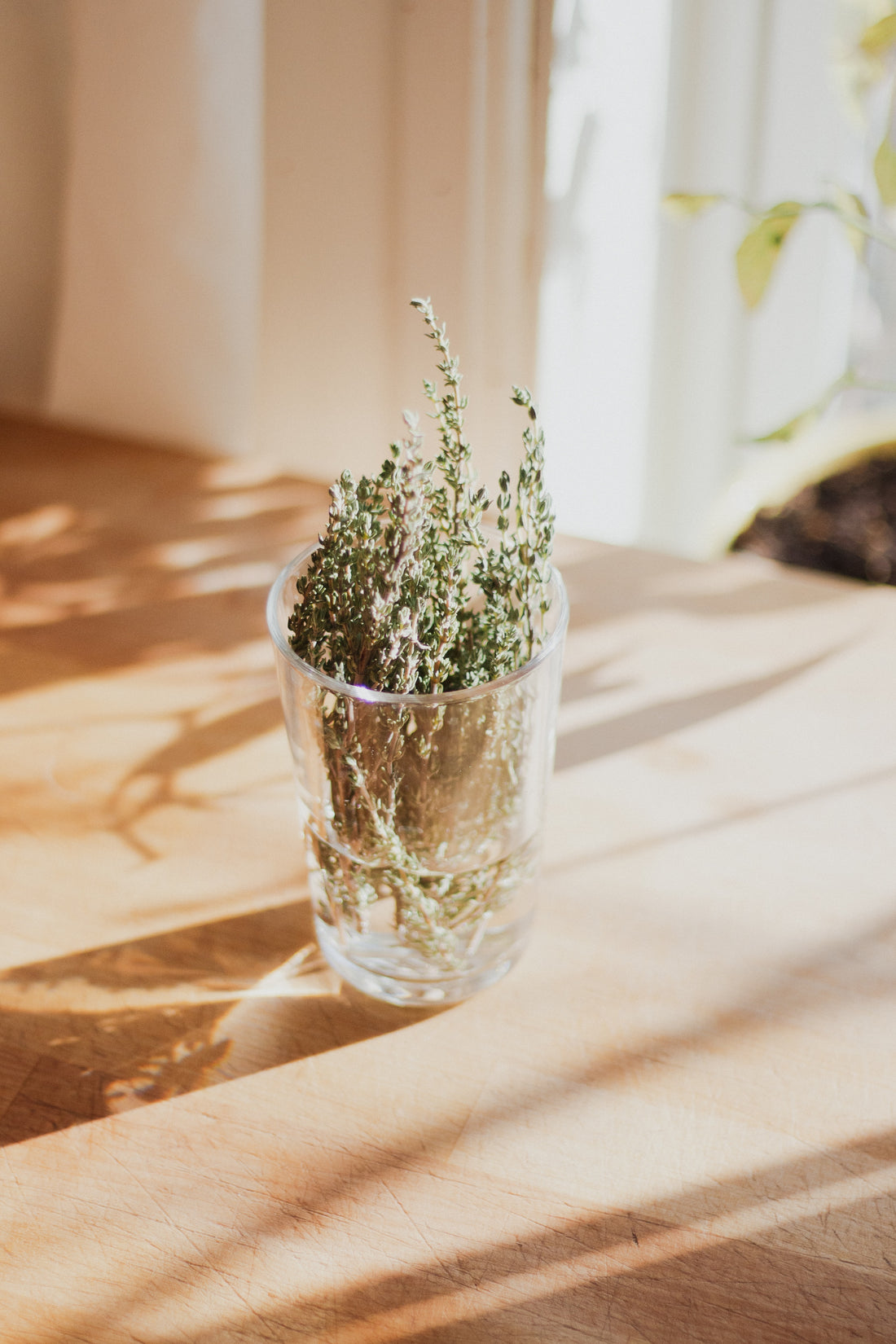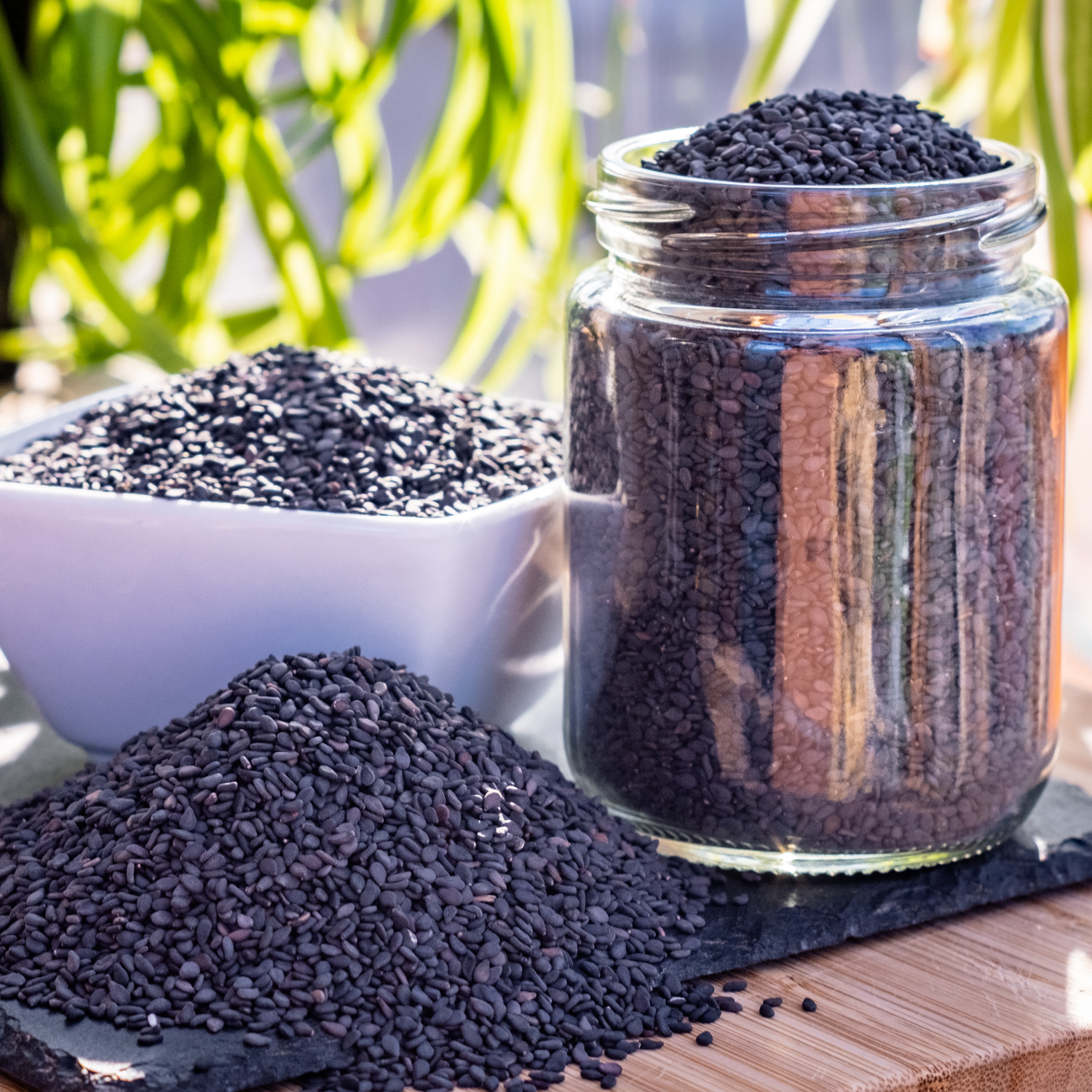
Thyme
Share
If you are a spice and herb aficionado, you might one day ask yourself, “Hmmm, I wonder if there’s a herb that was once prized by both Roman emperors and Victorian children?”
...Okay, so maybe no one would ever ask themselves that question. But, as it happens, the answer is “thyme.”
Thyme is thought to be one of the oldest herbs known to humankind. The herb is a member of the mint family and is indigenous to the Mediterranean, thriving in Europe, western Asia, and North Africa. Like other herbs from this region—such as basil—thyme has been a popular herb for thousands of years. From the time of the ancient Mediterranean empires through the Middle Ages, thyme was associated with courage, strength, cleanliness, healing, and death. The name “thyme” is likely derived from the Greek thymon, meaning “courage,” or thymiama, meaning “incense.” Given how thyme was used in the ancient world, either origin makes sense.
Believing that thyme could ease the passage to the afterlife, the ancient Egyptians used thyme in their embalming processes. Rather than using the herb as an aid to the dead, Ancient Greeks and Romans used thyme to help the living. Athletes at the ancient Greek games believed thyme oil would give them strength, and soldiers bathed in thyme-infused water for the same reason. Roman soldiers exchanged sprigs of thyme to demonstrate respect, and believed that inhaling thyme’s scent would evoke bravery. Roman naturalist Pliny the Elder listed at least 28 herbal remedies derived from thyme which could treat a vast array of ailments, including reviving epileptic patients after fits and helping those with chest congestion cough up their phlegm. Eating thyme before or during a meal was widely believed to protect the consumer from poison, making the herb popular among emperors and others who feared assassination. Warm baths infused with thyme were widely believed to counter the effects of poison, should a toxic substance be accidentally consumed. Burned to purify houses and temples, thyme was also a popular ancient fumigant. The Romans also enjoyed thyme simply for its flavour, using it as an accompaniment to cheese and to flavour alcoholic beverages.
The Romans brought thyme to the westernmost reaches of their empire, and the herb’s popularity across Europe lasted throughout the Middle Ages. By the sixteenth century, thyme was widely grown in Britain, though the cool, damp climate could not produce as pungent a herb as could the Mediterranean. Throughout the Middle Ages, sprigs of thyme were given to men going into battle, to bring courage. Thyme was also used in medieval herbal medicine. During the Black Death, thyme was a major ingredient in protective posies worn around the neck and in poultices applied to buboes (the giant blisters caused by bubonic plague).
Ancient and medieval healers weren’t entirely wrong about the herb’s healing powers. Though not the poison antidote wished for by the Romans, thyme contains the antiseptic chemical compound thymol. Thyme was widely grown in medieval kitchen gardens, and the herb’s frequent use may have offered some protection against spoiled meat and foodborne disease. Thyme remained a popular antiseptic until into the twentieth century. Before infection was properly understood, Victorian nurses soaked bandages in thyme-infused water, and, as recently as the First World War, thyme essential oil was used as a battlefield antiseptic.
Thyme wasn’t just popular for its flavour and medicinal properties—it also had some rather fanciful associations. In ancient Greece, saying that someone “smelled of thyme” meant that the person was attractive and stylish. In the Middle Ages, patches of thyme growing in the garden were thought to attract fairies who would in turn bring good luck. This link with fairies lasted into the Victorian era. Wild thyme was supposed to signify a place where fairies had recently danced, leading generations of little Victorian girls to camp near remote patches of thyme in the hope of seeing woodland fairies.
Today, thyme is favoured solely for practical purposes, and still has a role in herbal medicine. The herb is antimicrobial, antispasmodic, expectorant, and antitussive. Thyme’s antiseptic compound, thymol, is used in modern products like mouthwash, hand sanitizer, and acne medication. Practitioners of holistic medicine use diluted thyme essential oil (the pure oil can be toxic in high concentrations) to relieve skin and mouth infections. Thyme-infused honey can help to soothe a sore throat, and, taken in large quantities, thyme may help to alleviate bloating and belching. Traditionally, thyme has also been used to help rid the body of worms and other parasites. Thyme is also used in aromatherapy to relieve respiratory afflictions and stimulate immune responses.
As a culinary spice, thyme is incredibly common. It is used in European, Mediterranean, Middle Eastern, African, Latin, Central American, Caribbean, and North American cuisines. There are many varieties of thyme, but common thyme is the one most often used in cooking. The other varieties are primarily planted as decorative garden fillers. Thyme is best used in savory dishes, such as roasted meats and vegetables, fish, and a variety of soups and casseroles. It pairs well with rosemary, sage, oregano, basil, marjoram, garlic, and lemon. Thyme is also used in some savory baking, and in herbed butters and flavoured vinegars. Thyme is often used fresh, but as is usually the case, dried herb is more practical for most home cooks. Dried thyme lasts far longer than fresh, has a more concentrated flavour, and is less expensive.
Try Vanillablossom thyme in this grilled salmon recipe!
Ingredients
6oz salmon fillets¼ cup lemon juice
1 tbsp lemon zest
2 tbsp olive or avocado oil
1 tsp dried thyme
1 tsp granulated garlic
1 tsp sea salt
Optional: lemon wedges
Instructions
Combine lemon juice, zest, oil, thyme, garlic, and salt in a large resealable bag. Add salmon and turn until coated. Allow to marinate in the fridge for 30 minutes (note: do not marinate for longer than one hour, or salmon will become mushy). Grill on medium-high heat for approximately 4 minutes per side. Brush salmon with marinade from the bag once after placing on the grill. If using lemon wedges, squeeze fresh lemon juice over each fillet right before removing from heat.
Spicy tip: when making salad, set aside chopped tomatoes and sprinkle liberally with salt and dried thyme. Allow tomatoes to sit while the rest of the salad is prepared, then add the herbed tomatoes into the salad for extra flavour.
Sourced by Natasha Simpson

